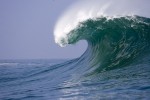
In the 19th century, California’s leaders developed a solution to potential water shortages that served the state for over 100 years. A system of dams and canals was built all over the state. As time went by, bigger dams and more canals were built to move more and more water. The last big project was the Central Valley Water Project of the 1960s. The system did substantial environmental damage to rivers, streams, and fisheries, but the projects were seen as the only solution for a thirsty state.
In addition to the big projects, wells have been drilled all over the state. As a consequence, water tables have been steadily falling, resulting in ever deeper wells and land subsidence in large areas of the San Joaquin Valley.
The Proposals
California’s present water system has reached the end of its ability to serve the population of an ever growing state. Recognizing this fact, the Governor’s office is proposing construction of multi-billion dollar tunnels underneath the San Joaquin Delta to move water from northern California to the south. The proposal ignores the fact that in the future, northern California will need to keep an ever greater percentage of its water to accommodate population growth.
Meanwhile, other politicians have proposed building bigger dams to hold more water for dry years. It is only a matter of time before the Auburn Dam proposal resurfaces. On the west side of the Valley, the state has debated for years the construction of a huge second dam south of San Luis Reservoir that would flood the incredibly beautiful Los Banos Creek basin.
All of these proposals are 19th century solutions that will not fix the 21st century problem that is facing California. The problem is that the state’s rainfall doesn’t yield enough fresh water to serve the future larger populations without destroying the ecosystems of the entire state.
Conservation
Water conservation is promoted as one alternative to destroying the environment of California. Conservation has its limits. No matter how much Californians conserve, the drought cycles lead to worry and shortages in various parts of the state. As the population grows, the shortages become more acute and more frequent.
In 2013, after less than a year of drought, the entire state is talking about imposing mandatory water rationing. The economic ramifications of water shortages are self-evident. California cannot expect to have a strong and vibrant economy, let alone economic growth, if inadequate water supplies are a constant threat.
A Logical Solution
If California has inadequate amounts of natural water supplies, production of water is the only logical solution. Increase supply by making water.
If fresh water can be produced economically, then the problem of the fresh water shortage can be solved in perpetuity. California is adjacent to the world’s largest body of water: the Pacific Ocean.
In Businessweek, the Dow Corporation advertised a desalinization plant that is capable of producing 15 million gallons of water per minute using reverse osmosis. If such plants were set up along coastal California in strategic locations, much of the fresh water consumed in coastal communities could be produced there.
Ninety percent of the population of California lives within 30 miles of the coast. Doesn’t it make sense to produce water where people live rather than transport it hundreds of miles? If water were produced where the bulk of the population lives, then the interior would be able to keep its water for agriculture, fish, and preservation of ecosystems.
The Illogical Opposition to Desalinization Technology
Naysayers to desalinization rely on two illogical arguments.
First, at a cost of around $1500 per acre foot, opponents say desalinization is too expensive. This flies in the face of the fact that Saudi Arabia and the island of St Maarten in the Caribbean have had cost effective plants in operation for years. If California desalinization plants augmented natural local supplies, the average cost per acre foot of water would be substantially less than $1500. In addition, over time, the technology will improve and make the average cost of production drop. Thus, the technology and the cost make water production a feasible strategy that will eliminate the worry of drought obsolete.
The other reason for opposition to desalinization comes from the worry about what to do with the waste generated from the desalinization plants. Sea water contains all sorts of minerals, both beneficial and toxic. The waste will need to be disposed of.
This is a short term concern that can be handled creatively, just as present landfill technology has improved recycling and waste quantities to levels that can be economically dealt with.
Waste streams are such that dumps that were previously considered 30 year landfills can now be used in perpetuity because of the improvement of recycling and decomposition technologies. The technologies have improved to where historic landfills are being mined for recyclables!
California has the solutions. All it needs is the leadership to see the solutions and act on them. People are willing to pay for a dependable water supply provided they pay only for the actual cost of production and not to line the pockets of profiteers.

Less than 20% of water is for urban use. It’s mostly about agriculture and keeping enough water flow to flush minerals out, keep rivers cool, and keep saltwater out. Otherwise irrigated farming becomes a toxic mess. So desal works if people are willing to pay for it. They buy bottled water, so they may. But the real problem is agriculture and for that unfortunately you need lots of volume and fewer canyons.
Good review of uses data at California Waterblog, Water—Who uses how much.